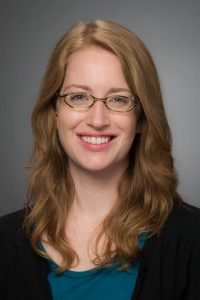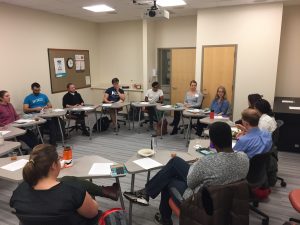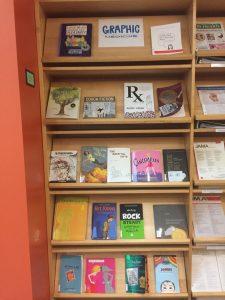Mar
18

Posted by Sarah Levin-Lederer on March 18th, 2022
Posted in: Blog
Tags: graphic medicine, hospital librarians, Member Spotlight

Alice Stokes, Research and Education Librarian, Dana Medical Library
Alice Stokes is a Research and Education Librarian at the Dana Medical Library at the University of Vermont. Being a lifelong Vermonter, Alice feels that it’s important to be involved in her community and the importance of working together means that she has worked with NNLM R7 (and NER previously) on many projects including graphic medicine, the Hospital Library Advisory Group and participating as a speaker on NNLM webinars on topics such as Ransomware Attacks and Graphic Medicine Programming.
When I was little, I wanted to be an obstetrician because I thought that that meant holding babies all day, but the required surgical training meant it wasn’t really for me. But looking back I sometimes wonder if maybe midwifery would have been a good path.
I’ve always had an interest in healthcare and medicine especially related to holistic medicine even though I didn’t go into a healthcare field. I majored in environmental studies at UVM and studied abroad in Madagascar where I did a month-long study at a rural integrative medicine clinic. I even did my senior thesis on medicinal plants that grow in VT.
When I was in library school, I was fortunate enough to shadow someone who worked at Dana, which lead to an internship and job in health science librarianship.

UVM community participating in a Graphic Medicine book club discussion of Fun Home by Alison Bechdel
It’s a buzzword, but networking is really important. Making actual connections by going to meetings and hearing about what other people are doing, what their interests are and listening for mutual interests and points of connection. I’m an introvert, so working on teams or projects with people really helps me have some structure to form lasting relationships.
For instance, with our graphic medicine book clubs, I have reached out to student interest groups related to the topics to co-sponsor the discussions. A faculty member saw the flyers and contacted me to work together on a graphic medicine elective he was developing. He’s become an ally for graphic medicine programming in the curriculum.
Currently, I’m one of three Research and Education Librarians at Dana Medical Library. Hopefully soon to be more as we fill a few vacancies. These are liaison librarian positions and we do a little bit of everything.

The Graphic Medicine collection at Dana Library at UVM.
It’s a flexible structure, which means that no one person is doing all clinical or all med ed. Right now, I’m the liaison to nurses at the academic medical center, to pre-clinical medical curriculum (first two years of med school), in charge of mobile apps and graphic medicine.
I also coordinate the Health Research Associate Program that does outreach to hospitals and other organizations in Vermont that need access to information. It’s a membership program that does searching for hospitals, the department of public health, law firms and really anyone who might need health information. The need for this kind of service has increased over the last 10 years since many hospital library positions have been cut.
I feel like MedlinePlus is underrecognized. It’s really valuable for answering consumer health questions and providing patient education. I don’t do a ton of consumer health work, but it’s great for the clinicians, especially the nurses I work with to be aware of. I use PubMed a lot for work, but MedlinePlus is valuable to a broad range of people across their life.
Because Vermont is so small, there aren’t many other academic science libraries or other medical libraries nearby. Being a part of the Network means being connected to a larger community and resources. It helps us feel less isolated up here. Other states in the region may feel this way too; small, but also spread out in a weird way.
The Network is also very approachable. You wouldn’t call up NLM, but you can approach folks in the region and say, “Hey, what’s going with this?” It also provides access to information with training and free CE. It’s nice to be able to keep up with stuff and even learn about things that might be outside of what you normally do.
Dana has also taken advantage of funding from being able to travel to regional events including a graphic medicine conference in 2019 to grants that allowed us to have a networking day with folks from across Vermont.
Supportive
Because Vermont has a small population, there’s a lot of interconnection between people. You might meet someone on campus and then run into them at the grocery store, which makes for a strong sense of community. People bring their full selves to their jobs because there isn’t a lot of anonymity.
If you’re interested in reaching out to Alice about any of the projects she mentioned in this interview especially about graphic medicine or supporting rural hospitals, she can be reached at alice.stokes@uvm.edu.